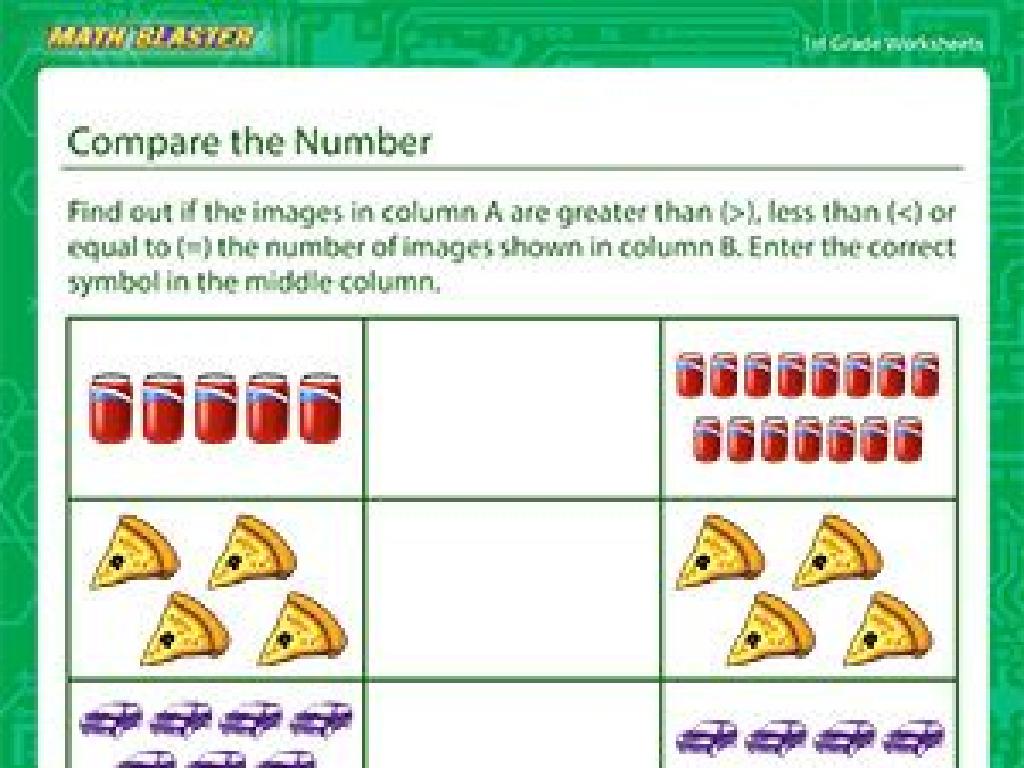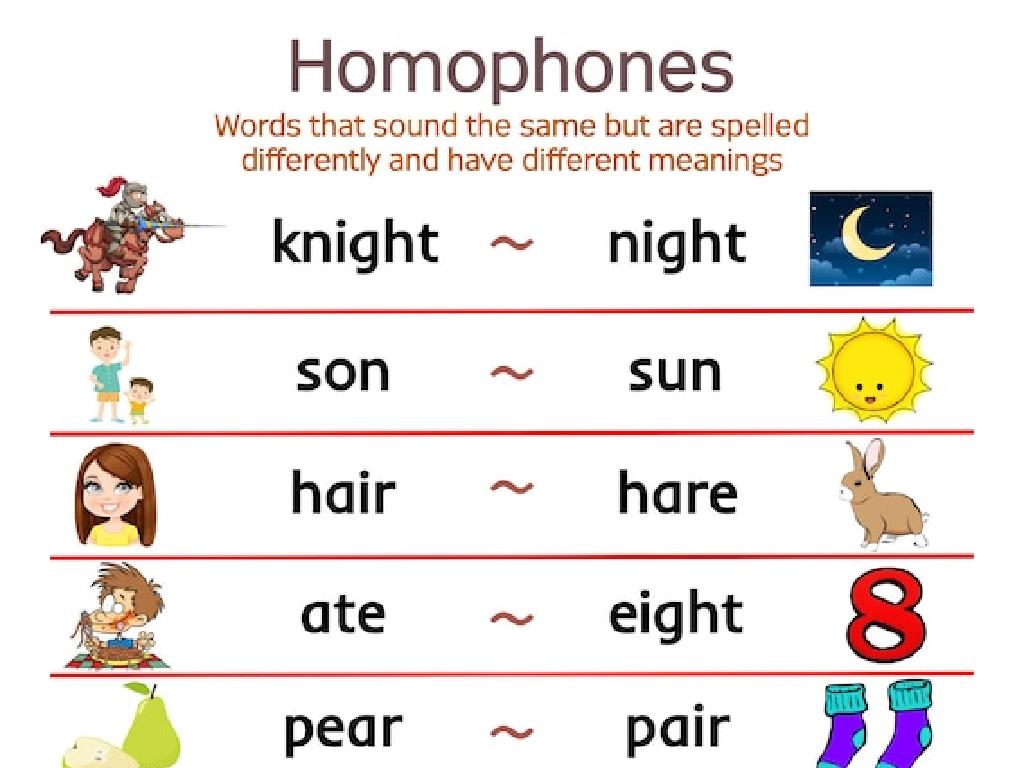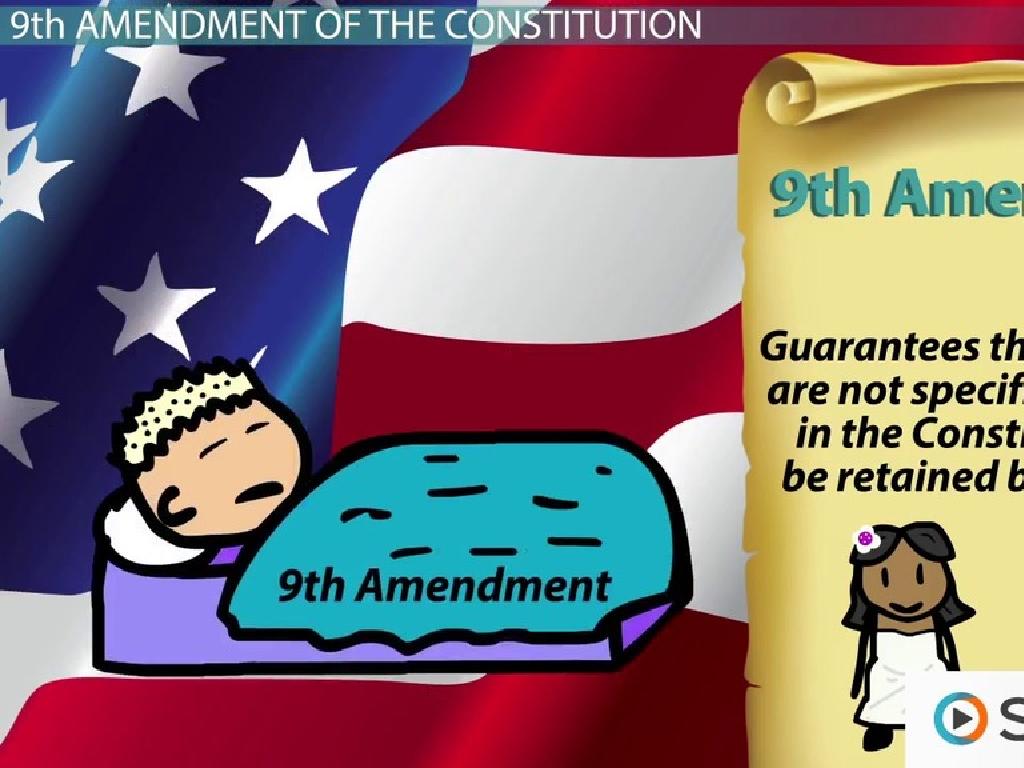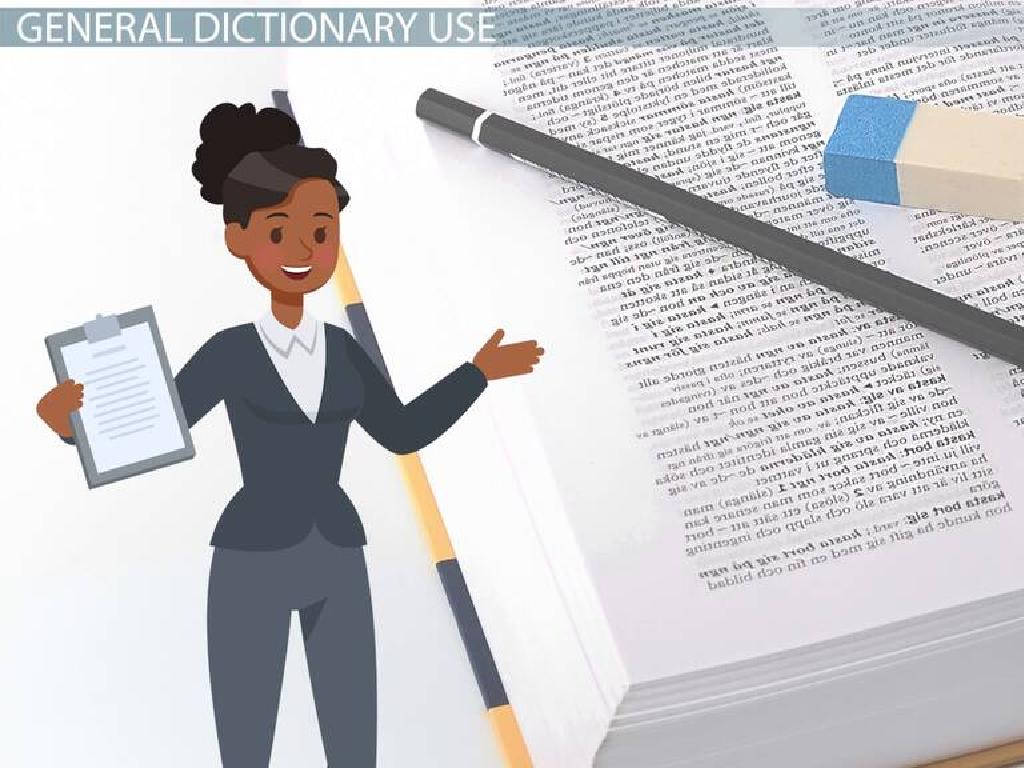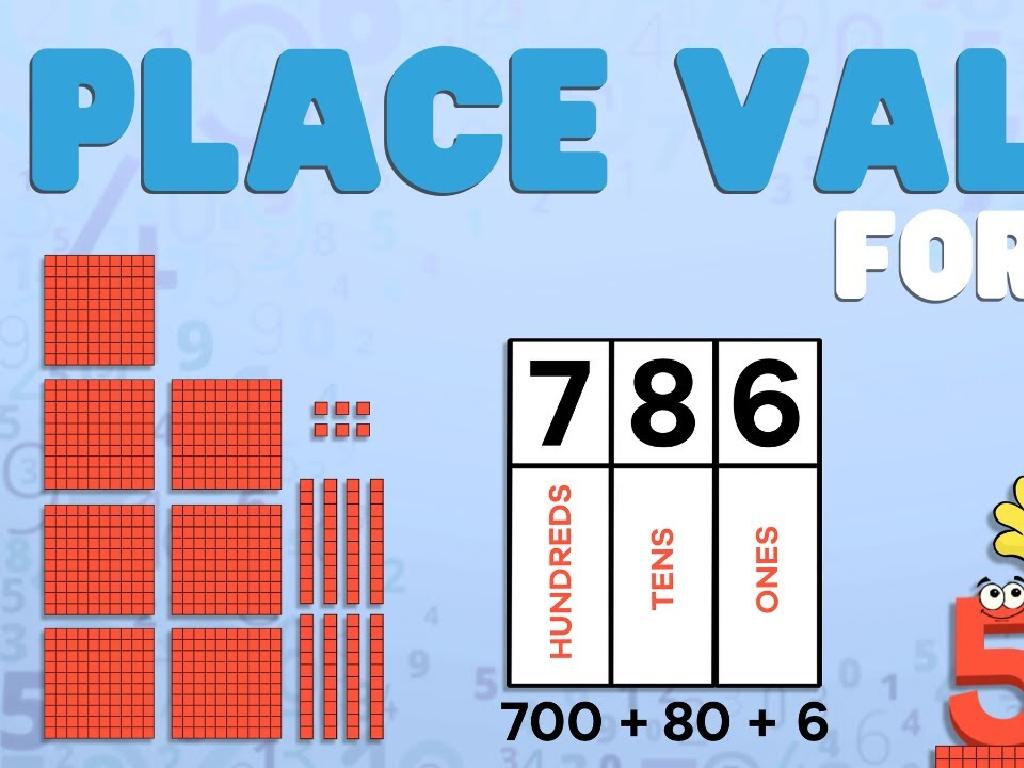Read About History
Subject: Language arts
Grade: Sixth grade
Topic: Analyzing Informational Texts
Please LOG IN to download the presentation. Access is available to registered users only.
View More Content
Reading About History: Analyzing Informational Texts
– Purpose of informational texts
– To inform or explain a historical event or topic
– Identifying key ideas in history
– Look for the main point the author wants to convey
– Understanding historical details
– Pay attention to dates, names, and places that support the main ideas
– Techniques for effective analysis
|
This slide introduces students to the skills needed to analyze informational texts, specifically within the context of reading about history. Emphasize the purpose of informational texts, which is to educate the reader about factual historical events or topics. Teach students how to identify the key ideas and supporting details, such as important dates, figures, and locations, which are crucial for understanding the full context of historical texts. Discuss techniques such as highlighting or note-taking to help with analysis. Encourage students to ask questions about the text to deepen their comprehension. Provide examples of historical texts for practice.
Exploring Informational Texts in History
– Define Informational Text
– Factual writing that informs or instructs the reader on a specific topic.
– Contrast with Fiction
– Fiction is a creative narrative; informational texts are based on facts and real events.
– Informational Texts in History
– They provide factual details and accounts that shape our understanding of historical events.
– Enhancing Historical Understanding
|
This slide introduces students to the concept of informational texts and their importance in the study of history. Begin by defining informational text as writing that provides factual information on a particular subject, often structured in a way that educates the reader. Highlight the differences between informational texts and fiction, emphasizing that the former is based on facts and reality, while the latter is a product of imagination. Discuss how informational texts serve as a critical resource in learning history, offering insights into past events, cultures, and significant figures. Encourage students to think about how these texts help us build a more comprehensive understanding of the world and the events that have shaped it. Provide examples of informational texts, such as biographies, historical accounts, and reference books, to illustrate the points made.
Features of Informational Texts
– Understanding Headings & Subheadings
– They guide readers through sections and topics.
– Decoding Captions, Diagrams, Sidebars
– Visual elements and brief texts explain more about the main text.
– Significance of Bold & Italicized Words
– Words in bold or italics highlight important concepts.
|
This slide aims to familiarize students with the common features of informational texts that aid in understanding and analyzing the material. Headings and subheadings organize content and make it easier to navigate through the text. Captions provide explanations for images, diagrams offer visual representations of information, and sidebars can contain interesting facts or related information. Bold and italicized words draw attention to key terms or ideas that are central to the text’s message. Encourage students to use these features as tools to better comprehend and engage with historical texts. In the next class, students can practice identifying these features in sample texts and discuss how they contribute to their understanding of the content.
Strategies for Reading Historical Texts
– Preview the text before reading
– Look at titles, headings, and images to guess the topic.
– Ask questions at each reading stage
– What do you want to learn? What did you discover? What did you learn?
– Connect to what you already know
– Think about similar events or facts you’ve learned before.
– Relate to other texts and context
– How does this text compare to other stories or history you’ve read?
|
This slide aims to equip students with effective strategies for comprehending historical texts. Previewing helps set expectations and prepares students for the content. Encouraging questions before, during, and after reading fosters critical thinking and engagement. Making connections to prior knowledge helps students relate new information to what they already understand, enhancing retention. Relating the text to other readings provides a broader context and deepens understanding. Instruct students to apply these strategies in a practical exercise with a historical text during class. Discuss how each strategy helped them understand the text better.
Identifying Main Ideas and Details
– Finding the main idea
– The main idea is the central point the author wants to convey.
– Identifying supporting details
– Supporting details are facts or examples that explain the main idea.
– Summarizing key points
– Use your own words to briefly explain what you ve read.
– Practice summarization skills
– We’ll summarize a history paragraph together in class.
|
This slide is aimed at teaching students how to effectively analyze informational texts by identifying the main ideas and supporting details. Start by explaining that the main idea is the most important point the author is trying to make, often found in the first or last sentence of a paragraph. Then, discuss how supporting details flesh out the main idea with evidence or examples. Encourage students to practice summarizing these points in their own words to ensure they’ve understood the text. In the next class, provide a historical paragraph and guide students through the process of summarization, reinforcing the skills taught in this lesson.
Analyzing the Author’s Purpose in Historical Texts
– Understand the author’s intent
– Why did the author write this? To inform, persuade, or entertain?
– Identify the author’s perspective
– Is the author’s view neutral, supportive, or critical of the historical events?
– Evaluate arguments and evidence
– Are the provided facts and sources credible and logical?
– Reflect on the impact of history
|
This slide aims to teach students how to critically analyze historical texts by understanding the author’s purpose, identifying their point of view, and evaluating the arguments and evidence presented. Students should consider whether the author’s intent is to inform with factual details, persuade with a particular bias, or entertain with a narrative. They should also discern the author’s perspective on the events and whether it is presented objectively or subjectively. Lastly, students should learn to assess the validity and reliability of the arguments and evidence used by the author to support their points. Encourage students to think about how the author’s purpose and perspective shape their understanding of history.
Class Activity: Dive into History
– Read a historical document excerpt
– Find the main idea and details
– What’s the central message? List key details that support it.
– Discuss the author’s purpose
– Why was this written? What perspective is shown?
– Share findings with the class
|
This activity is designed to enhance students’ skills in analyzing historical texts. Provide a short excerpt from a significant historical document, such as the Declaration of Independence or a speech by a historical figure. Guide students to identify the main idea and supporting details, which will help them understand the text’s message. Discussing the author’s purpose and point of view encourages critical thinking about the context in which the document was written. Finally, students will share their findings, fostering a collaborative learning environment. Possible activities: 1) Group discussion on the excerpt’s main idea, 2) Individual analysis of supporting details, 3) Class debate on the author’s purpose, 4) Creative presentation of findings, 5) Writing a reflection on the text’s impact on history.
Wrapping Up: History & Analysis
– Recap today’s key points
– Homework: Write a text summary
– Summarize the main events and ideas
– Create questions for discussion
– Think of what you’re curious about
– Reflect on today’s learning
– How has today’s lesson changed your view?
|
As we conclude today’s lesson, it’s important to review the key concepts we’ve covered about analyzing historical texts. For homework, students should write a summary of the historical text they’ve read, focusing on the main events and ideas. They should also prepare questions based on their reading that we can discuss in the next class. This will help deepen their understanding and engagement with the material. Encourage students to reflect on what they’ve learned and how it might change their perspective on history. The goal is to foster critical thinking and analytical skills that they can apply to future texts.

